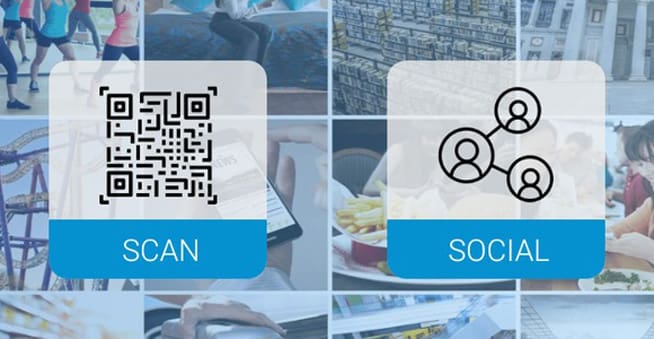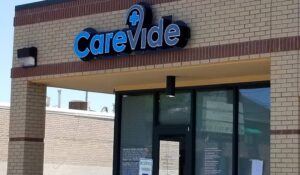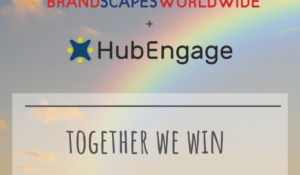If you are thinking about implementing an employee engagement app at your company, do not choose the first one that catches your eye. Instead, investigate your options so you know which features are included with which products. The best employee engagement apps have several features in common, including the essential perks detailed below.
At one time, many businesses supplied their employees with cells or smartphones, but the bring-your-own-device (BYOD) culture has begun to take hold. Consequently, you will want an employee engagement app that works with both Apple and Android products. Otherwise, some of your employees might not get to take advantage of the app.
An increasing number of businesses and organizations have adopted a mobile-first strategy for all tech development, from apps to their websites. If you fall behind this trend, you could lose ground to your competitors.
Plus, if you choose a mobile-first app, you will know that the developers considered mobile factors during the design and coding process. Developers knew that users would access the app primarily on mobile devices, so you can expect each module to function well and look spectacular despite small screen sizes.
2. Customizable Interface
Branding is everything these days, and a generic employee engagement app will not do your brand any favors. Even when you are sharing internal documents, branding unites your team and helps them feel as though they are an intrinsic part of your culture.
For instance, the HubEngage app allows you to customize just about every feature, from the colors to the logo that appears at the top of the screen. When you brand your app, you let your employees know that you are developing a team-oriented atmosphere and that everyone in the company is united in pursuit of similar goals.
Think of it as a uniform. There is a reason certain businesses, law enforcement agencies, and militaries issue uniforms. A similar dress creates a sense of camaraderie. While branding might help you establish your company with customers, it can also prove beneficial when communicating with employees.
Regarding customization, you may find that you do not need some of the modules that come with the HubEngage employee engagement app at the present time. If that is the case, you can easily pare down the modules to the ones that interest you most or that will best benefit your employees. Alternatively, you can give them all a try and use built-in analytics to measure engagement for each type of module. It is up to you how much or how little of the app you share with your employees.
3. Easily Accessible News and AnnouncementsParticularly in this increasingly mobile society, new developments arise at a break-neck pace. Even within your organization, you might need to communicate news, rules, policies, changes, and even assignments quickly, and an employee engagement app should serve as the perfect delivery system.
Maybe you need to announce a deadline for an upcoming project, or perhaps you want to share a motivational story from an online publication. Whatever the news, you can push it to all of your employees with just the tap of a button through HubEngage’s employee engagement app. Furthermore, you can add photos, videos, text, and any other elements you feel might increase interaction and interest.
Announcements also come in handy during a security or safety crisis. You can alert employees to a problem, and they will receive an instant notification on their phones. From there, you can advise them about how to proceed and keep them updated on the situation without grouping everyone together in the same room or relying on the notoriously slow and unreliable email strategy.
4. Interactive Learning Modules
What if you could port those benefits over to your employee engagement app? You might spend less time sending pointless emails and more time watching your employees engage with and challenge one another as they work through different quizzes, tests, and learning modules on their phones or tablets.
Create a custom-designed scavenger hunt that forces your employees to think outside the digital box for a while. Trivia questions and quizzes also prove effective, especially after employees work through a training module. You can use pre-loaded video training to reduce time and costs associated with educating your workforce, then let them test their knowledge on their own time.
5. Instant Messaging
Employees, managers, and C-suite executives need to communicate with one another, but face-to-face talks are not always practical. Instant messaging offers a convenient, faster, and more personalized alternative to email, but it does not take up as much time as phone calls.
An internal instant messaging feature turns your employee engagement app into a one-stop communication device. Team members can ask one another questions about projects on which they are collaborating, for instance, or let someone know if they need help with a particular task.
Instant messages can even facilitate more in-depth collaboration through back-and-forth feedback. For instance, maybe employees in separate locations can share screens on their computers while they communicate via instant messaging.
Additionally, instant messages do not disrupt other workers like phone calls might. If your employees work in a bullpen or cubicle environment, loud phone conversations can prove counterproductive. It is a cost-effective solution that can, when bundled with a full-scale employee engagement app, integrate with other modules to create a more well-rounded experience for all employees.
6. Feedback and Surveys
How often do you ask your employees for their opinions? Do you take polls before putting into effect a new policy or rule? Do you inquire about job satisfaction?
Employee engagement apps allow you to do those things and much more. From inquiring about overall happiness to soliciting opinions about specific projects and protocols, you can use surveys and other feedback systems to tune into your employees’ needs and desires.
Think about your competition for a moment. Now picture your top talent in your mind. Do you want those professionals to defect to the competition? Of course not. However, if you do not assess your employees’ satisfaction level, you will not know that you need to fix problems, add more benefits, or change how you structure daily operations at your business.
The best employee engagement apps, such as HubEngage, also give employees a direct line to their leaders. Instead of sending messages up the corporate ladder, they can let their superiors know what they are thinking and voice their ideas. If you establish a culture in which employees feel comfortable speaking their mind — as long as they do so respectfully — you can more easily retain your best employees and encourage all workers to perform productively every minute of the workday.
7. Notifications
There are endless ways in which you can use notifications to not only improve employee engagement but also to increase productivity and efficiency in the workplace. A few examples might include:
- Releasing the results of recent employee surveys
- Letting employees know about a special event, reception, or party
- Informing workers that a meeting has been rescheduled
- Inviting staff members to vote on a particular topic
- Reminding employees to participate in in-app activities
- Issuing statements about system downtime and other issues that might impact productivity
- Advising employees that they can leave work at a specific time
- Reminding employees to sign up for company benefits during open enrollment
- Recognizing workers for going above and beyond the call of duty
- Announcing changes in the quiz leaderboards
- Wishing employees happy birthday
- Asking workers to give shout-outs to other workers who have exemplified company values
- Adopting in-house hashtags to develop camaraderie
- Distributing motivational or thought-provoking quotes
As you can see, notifications can make communications a breeze in the office, especially for notes or memos that do not require an instant messaging service. Notifications are typically one-way, so they allow leaders or executives to broadcast information to a large group of recipients at one time.
You can also segment audiences for notifications based on what specific employees need to hear. For instance, if you have an announcement for the marketing department, the HR department does not need to receive it.
8. Incentives
Humans thrive on incentives. Maybe you downloaded the Starbucks app because you can earn free drinks with a certain number of qualifying purchases. Perhaps you beat your sales quota last quarter because of the prize offered at the end of the year.
Whatever the case, you can encourage employee engagement by offering incentives through your app, but only if the app supports them. Many types of incentives exist:
- Coupons and discounts on company merchandise
- Free gifts
- Badges for completing certain learning modules
- Rewards for getting excellent results on quizzes
Use incentives to encourage your employees to use the app daily. Before you know it, the app will become part of your organizational fabric.
If you have not tried an employee engagement app or if you have found the ones you have tried a little lackluster, we have the solution. Contact us to learn why HubEngage offers the most comprehensive, user-friendly employee engagement app on the market today.













